The 10 Best and Worst Taxis In The World

Remember what life was like before ride-share apps like Uber and Lyft rose to prominence? Yeah, me too. And though we may be hailing them less today, we still have a soft spot for the humble taxi cab. Not every one looks like ours here in the States, though. You’ll see that other areas of the world have very different interpretations of the best way to get people from point A to point B—with “best” sometimes not being very good at all.
In rounding up the most noteworthy and unique taxis, we looked at key factors including reliability, safety, popularity, and practicality. Now, not all of the bad taxis are inherently dreadful. Some are fascinating—having wheels, tracks, or even propellers—with interesting design choices.
The Good
Ford Crown Victoria
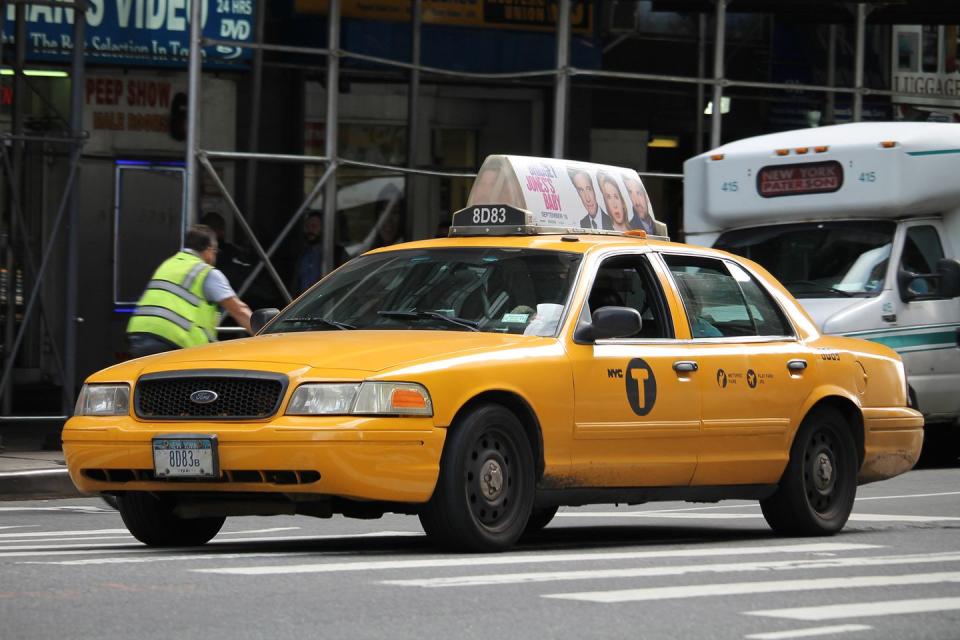
Few taxis are more iconic than the New York City Yellow Cab. Think about it: Just about any movie or TV show set in the Big Apple features a number of yellow cabs just to set the scene.
Built on the underpinnings of Ford’s Crown Victoria, these workhorses are affordable, reliable, and simple to wrench on. That’s not to mention there are already millions in existence, making replacement parts easy to find; 10 million Ford Crown Victoria, Mercury Grand Marquis, and Lincoln Town Cars—built on the so-called Panther Platform—were built after their introduction in 1979.
It’s one of the last body-on-frame sedans built by the Blue Oval, meaning that it’s literally built like a truck—with the body sitting on a rolling chassis. Most original Crown Vics were packing a 4.6-liter V8 engine, putting down a measly 210 horsepower. That might not sound like earth-shattering performance. And that’s kind of the point. These big-displacement, low-power engines are never pushing their limits. This leads to better reliability, which means a taxi doesn’t have to be in the shop as often.
Water Taxi

When you hear the word taxi, you probably think of automobiles traveling along the streets of any given city. That’s not the case in Venice, Italy, where streets, well, don’t really exist. Given the city has more water than pavement, this necessitates the use of boats instead of taxis.
While a small row boat—also referred to as a sandalo—is great for bopping around the calmer waterways, they aren’t able to compete with the larger swells of the lagoon’s open waters. That’s why most taxi companies use powerboats, which are much more capable when it comes to getting travelers where they need to go. While have taxis never had a reputation for elegance, most Italian water taxi companies use fleets of beautifully trimmed wooden power boats.
Nurburgring Taxi
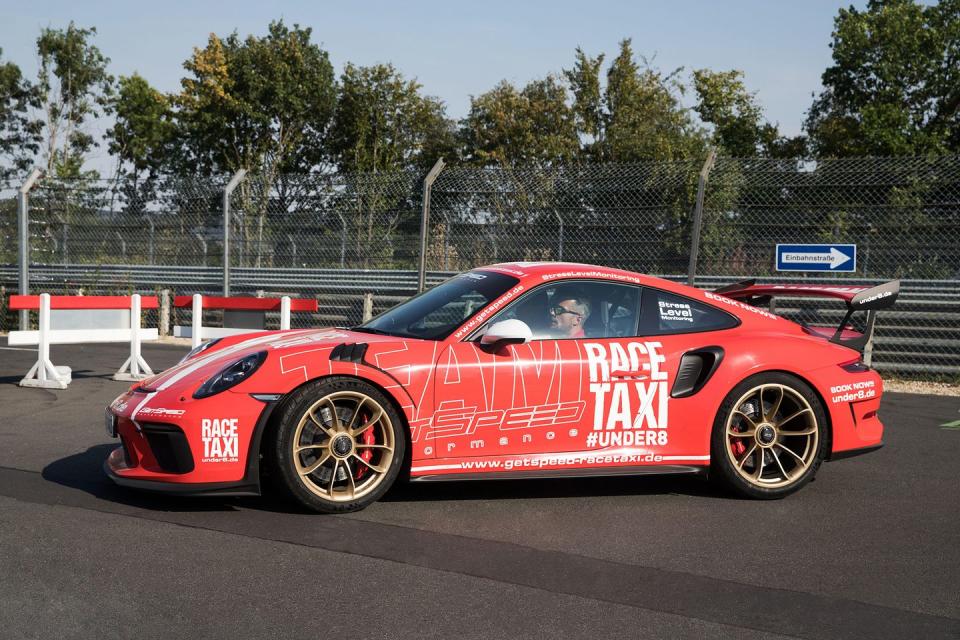
Taxis often get a reputation for being the workhorses of the road. And they really are. However, the Nurburgring Nordschleife, located in northwest Germany, has a different interpretation of the taxi. Most might see the Nordschleife (a.k.a. “The Green Hell”) as one of the most demanding race tracks in the world—with over 150 corners that cut through the Eifel mountains. However, when the race track isn’t being used for competition events, the venue holds what’s called Touristenfahrten—which translates to “public driving sessions.” It’s actually open as a toll road.
This means companies can run taxi services with fleets of high-performance vehicles piloted by professional drivers. Customers can pay to be chauffeured around the track, allowing them to experience the thrills of the Green Hell without risking life, limb, and car. The Porsche 911 GT3 RS you see above is a popular candidate for duty as a “Ring Taxi,” given its reputation as one of the greatest sports cars ever made.
Tuk Tuk
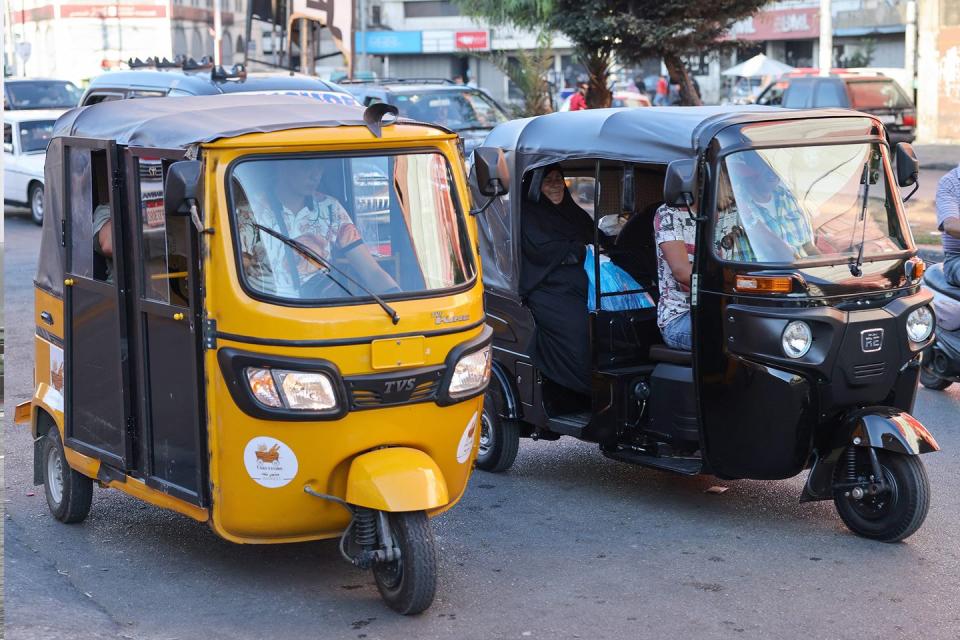
Many other areas of the world use three-wheeled machines called tuk tuks; the term itself is highly disputed and is a reference to the noise the onboard two-stroke engine makes when the driver rolls onto the throttle. These rigs are also known as Auto Rickshaws, but nobody really knows which term came first. Regardless, the three-wheel machines share most of their resemblance with motorcycles given the single front wheel controlled by a set of handlebars.
Despite the etymology of the tuk tuk name coming from the pitter patter of their internal-combustion engines, the Electric Vehicle Association of Thailand is looking to retrofit them to use electric power. However, the conversion process has been quite slow given the existing rules and regulations involving quotas and licensing restrictions.
London Black Cab

Despite their name, the cars in London’s fleet of Black Cabs don’t actually have to be black. The vehicles were only sold in black after World War II. Nowadays you’ll see them rolling about the streets of London with bright and flashy liveries, wearing the colors of the given product they’re advertising. One interesting fact is that all black cabs must have a turning radius of 28 feet in an effort to breeze through the Savoy Hotel’s roundabout with some amount of dignity.
Becoming a cabbie in the U.K. necessitates passing “the knowledge,” an infamous litmus test that requires drivers to memorize all 25,000 of London’s city streets along with any businesses and landmarks that line them. It often takes would-be drivers years to get a handle on all of the street names before the examination; studies show prospective cabbies’ hippocampi—the area of the brain that focuses on memory—actually grow substantially on their way to learning the labyrinth of city streets and landmarks.
Bombardier SnowMobile
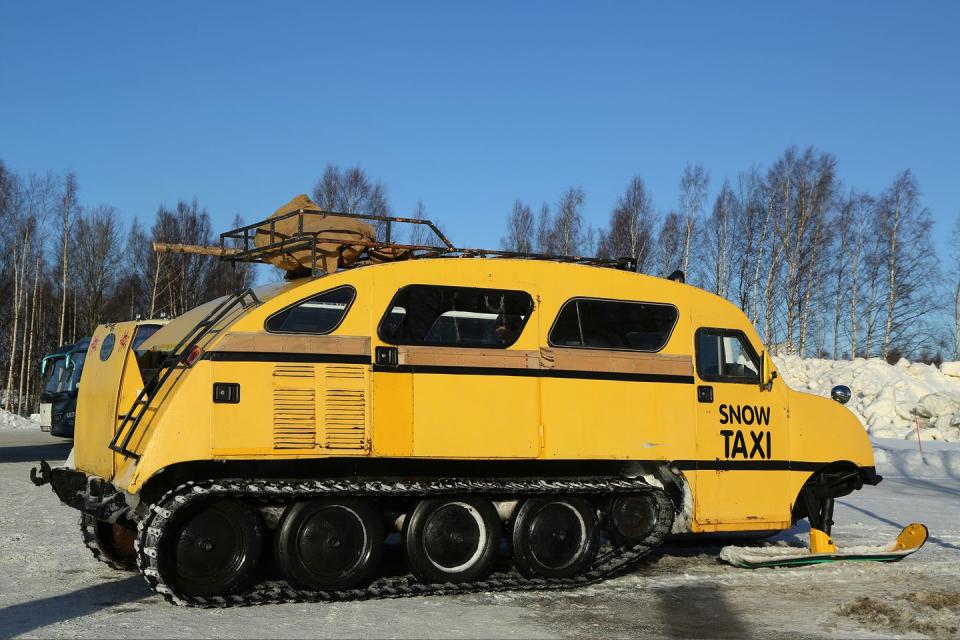
While Bombardier’s “Ski-Doos” have become the industry standard in winter powersports, things used to be different. Snowmobiles, or “sleds” as they’re sometimes called, started out as a sort of tank really, with tracks instead of wheels to maximize the contact area with the ground. Joseph-Armand Bombardier created (and patented) this sprocket wheel-and-track system that paved the way for snowmobiles today. The innovation was spurred on by the death of his son, after winter conditions kept Bombardier from safely getting him to a hospital.
While these slow behemoths (pictured above) never really caught on, the company redeemed itself later on by building a go-anywhere vehicle to replace the dogsleds that hunters used to get around the winter landscape. It was originally intended to be called the “Ski-Dog,” but the brand stuck with “Ski-Doo” after a misprint plopped down an o instead of a g. After its marketing about-face, Bombardier would go on to sell millions of the Ski-Doo snowmobiles that most likely come to mind.
The Bad
Motorcycle Taxi

For better or worse, motorcycle taxi firms are becoming extremely popular in West Africa—following big-time success in areas of Asia. Sure, two-wheeled taxis aren’t inherently bad, but they are extremely dangerous. The main reason for using motorcycles instead of cars is that they’re much nimbler in city streets. Think about it: In areas where you’d normally be stuck in gridlock traffic, motorcycles are able to split between the lanes. (Whether or not you should do this on a motorcycle is a debate we won’t wade into here.)
Though informal motorcycle taxi services are fairly common throughout Africa, the majority of them are unregulated. However, according to Reuters, the goal with most of the new firms popping into the market is to offer rides with improved safety and efficiency. The other goal is to offer the convenience afforded by apps like Uber and Lyft—giving customers the ability to hail a ride via an app.
Jeepney

The name Jeepney is a portmanteau of the names for World War II “Jeeps” and the pre-war “Jitney,” which became common slang for “baby bus.” While these taxis might look nothing like Willys and Ford Jeeps, they’re actually based on the same underpinnings. Hundreds of surplus Jeeps were sold or even given to Filipinos after American troops began to leave the Philippines following the conclusion of Word War II—making the plucky people carriers prime candidates to start a taxi fleet.
Modifications vary greatly but often begin with stripping the vehicle down to the bare chassis. Most notably, the rear of the vehicle is then lengthened and fitted with benches to allow passengers to sit facing one another; that’s not to say that they have a ton of room though, given the microscopic wheelbase and width of a World War II Jeep. While Jeepneys are the most affordable mode of transportation in the Philippines, they’re also incredibly unsafe given the passengers’ longitudinal seating and lack of seatbelts.
Cocotaxi
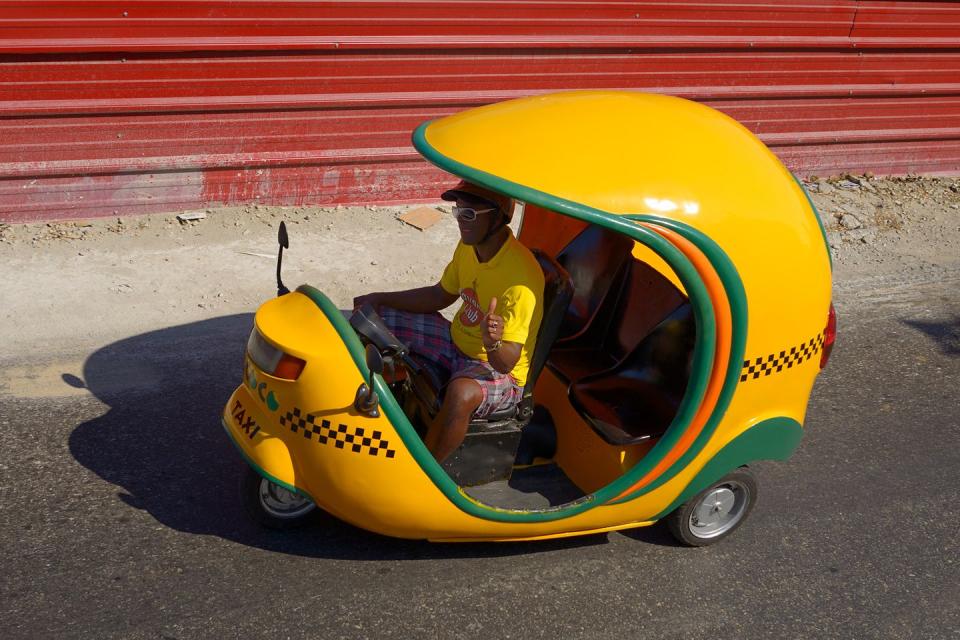
These pedal-powered egg-looking taxis—often found wending through the streets of Havana, Cuba—have to be some of the weirdest. Some have a two-stroke motor in the back to provide extra oomph for hillier routes. That being said, the vehicle’s callsign actually comes from the word “coco” (short for coconut), and hitching a ride in one of these death traps is just about as safe as wearing a coconut for head protection. In fact, Canada and the United Kingdom’s government websites both say to avoid them, citing serious accidents involving tourists.
These crazy machines hit the streets in the late 1990s and were initially thought of as a cheaper alternative to taxi cabs. However, most Cocotaxi drivers are just locals trying to make ends meet—leading to the lower cost. This comes at a cost to riders, with no regulations to speak of to keep passengers safe and drivers accountable for their actions.
Lada 2107
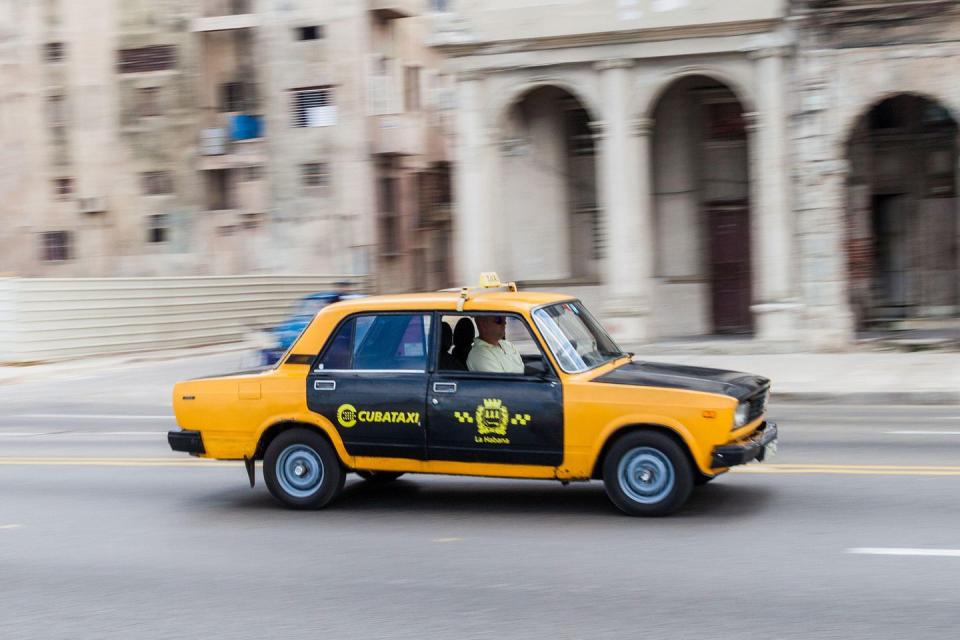
The Soviets don’t have what you’d call a spectacular track record for building high-quality vehicles. In fact, most of their automotive exploits involve buying the tooling from a previously successful company and ripping off the design. Lada’s 2107 is no exception. It’s based on the underpinnings of the Fiat 124—one of the best-handling sports sedans of its time. So where did they go wrong?
It all started when the brand swapped out the 124s components with more affordable (and worse) alternatives. Case in point: Lada got rid of the disk brakes for drum brakes, built the body panels out of much thicker steel, and (strangely) added an exterior starting handle. Despite the vehicle being a shell of its former self, Lada amazingly sold 18 million 2107s, meaning that it actually outsold the much nicer Fiat on which it was based.

 Yahoo Autos
Yahoo Autos 